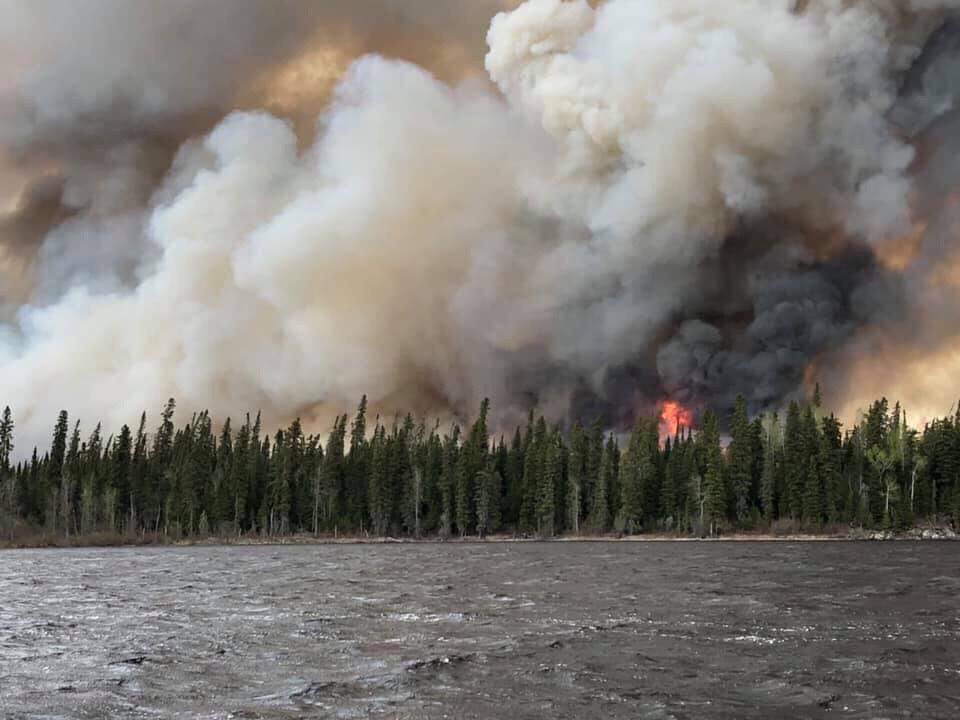
A full evacuation of a First Nation in northwestern Ontario was underway Monday as a forest fire burned less than ten kilometres from the community.
Heavy smoke had already led authorities to begin moving about 2,000 vulnerable residents out Pikangikum First Nation over the weekend, but an increased threat from the fire prompted the decision to clear out the community entirely, said a spokesman with Ontario’s Ministry of the Solicitor General.
Authorities planned to use a combination of air, land and water routes to take evacuees from the community of about 3,800 people to towns in northern Ontario, and the province was looking for other centres to help.
“We’re calling for additional communities across Ontario to provide assistance to evacuees because we need additional host communities,” ministry spokesman Brent Ross said in an interview.
Alvin Fiddler, the grand chief of the Nishnawbe Aski Nation — which represents 49 First Nations across northern Ontario — said the situation on the ground was getting “desperate.”
“There’s concerns about how close the fire is to the community, smoke in the runway and the ability for planes to land,” he said. “The airport is the concern.”
The decision on a full evacuation came a day after Pikangikum declared an emergency due to smoke from the nearby blaze, which is about 404 square kilometres in size and burning about six kilometres southwest of the community, on the opposite side of a lake.
“The fire hazard is high to extreme for the province today, so high winds, low relative humidity and fuels that will burn can contribute to fast moving fires,” said Jolanta Kowalski, a spokeswoman with the Ministry of Natural Resources and Forestry. “That can challenge suppression efforts on new and existing fires.”
Authorities said evacuees were being taken to the Ontario communities of Hearst, Smooth Rock Falls, and Kapuskasing while officials assessed the spaces available in other centres.
The Canadian Armed Forces said it was sending 20 Canadian rangers to the community provide ground support and a plane to airlift vulnerable community members to a safe location.
It was the second time in three months that some were forced to leave their homes — a different fire had led to vulnerable residents leaving in late May and early June.
Meanwhile, the northwestern Ontario First Nation of Keewaywin has also declared an emergency and evacuated its residents as a different forest fire — which is about 719 square kilometres in size — burns eight kilometres south of the community.
Fiddler said the forest fires highlighted larger issues around climate change.
“This has probably been one of the busiest fire seasons on record and it’s only the middle of July,” he said. “Our fear is that it’s communities like those that are situated in the NAN territories that will be most at risk.”